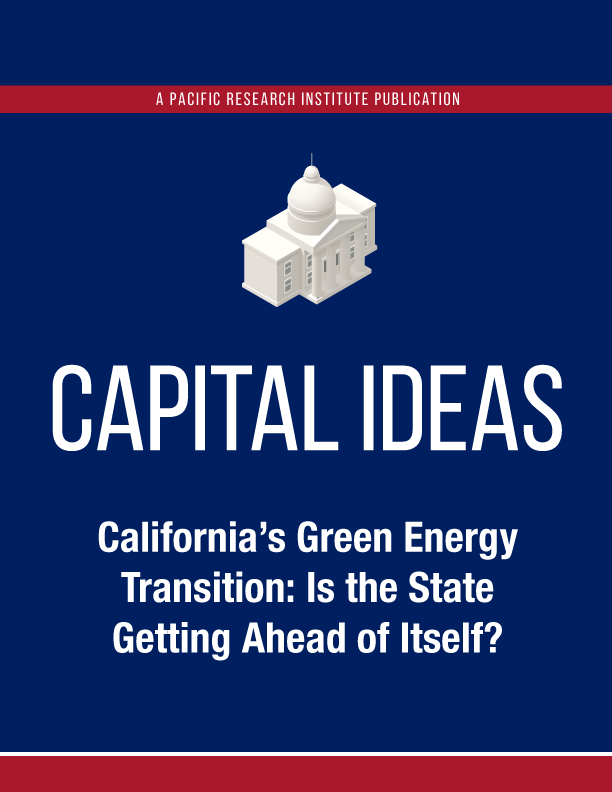No state is rushing toward a zero-carbon power grid faster than California. By 2045, every watt of electricity used in this state has to be produced by a source that emits no carbon dioxide. Sacramento is convinced it will happen because it has said so. Reality is likely to have other ideas.
To achieve zero-carbon, natural gas plants will have to be taken offline. Though they produce no CO2, nuclear plants also will be shut down while large dams will be abandoned as sources of electricity. That leaves only solar, wind and a few minor contributors, such as geothermal, bioenergy, and small hydropower, which combine for only a little more than 8% of the state’s power portfolio, to carry the load.
PJM Interconnection, a regional power transmission organization that serves 13 states and the District of Columbia, has studied the potential impacts of transitions to renewables for its own purposes. The report makes no mention of California, but its findings would be helpful if Golden State officials are willing to listen.
PJM looked at a number of transition frameworks and noted there is “potential timing mismatch between resource retirements, load growth and the pace of new generation entry” under “a possible ‘low new entry’ scenario.” The concern that “retirements are at risk of outpacing the construction of new resources.”
The PJM “analysis also considers a ‘high new entry’ scenario, where this timing mismatch is avoided.” While this is of course the preferred scenario, there are no guarantees that California’s transition will go forward as policymakers imagine it will.
California should be concerned about the “low new entry” scenario. The state already has experience with a “timing mismatch.” The heat of 2022 pushed the power grid to the edge. Conditions became so dire at the time that Politico said Gov. Gavin Newsom was forced to play “defense as he touted the state’s nation-leading climate goals.”
To their credit, some policymakers reacted as they should have. The closures of gas plants in Redondo Beach, Huntington Beach, Ormond Beach and Alamitos were delayed, as was the shuttering of theDiablo Canyon nuclear plant in San Luis Obispo County, which generates about 9 percent of the state’s electric power.
The question that can’t be answered now but will have to be in the not-so-distant future is: Will policymakers learn that going too fast is unwise, or will their preoccupation with burnishing their green cred plunge California into a future of rolling blackouts?
As of early 2023, California’s progress doesn’t inspire confidence. The transition path determined by Sacramento is so ambitious that it’s reasonable to doubt that the 2045 target will be missed, as well as the interim target of 2030, when 60 percent of the electricity provided to customers has to be produced by renewable sources. Infrastructure will have to be built far faster than it has been.
“California will need to sustain its expansion of clean electricity generation capacity at a record-breaking rate for the next 25 years,” the California Energy Commission said two years ago. “On average, the state may need to build up to 6 gigawatts (GW) of new renewable and storage resources annually. By comparison over the last decade, the state has built on average 1 GW of utility solar and 300 megawatts (MW) of wind per year.”
Though highly regarded as a green energy leader, California is actually playing catch-up. Consider that wind power, expected to provide a third of the state’s power in a little more than two decades, has been going nowhere, its growth flat since 2014. Maybe the reputation is unearned.
Energy author and host of the Power Hungry Podcast Robert Bryce points out that “California’s push for more renewable capacity keeps colliding with the same obstacles as the rest of the U.S. – land use conflicts for wind and solar projects, and an acute lack of transmission capacity.” No matter what’s been passed, signed, agreed to, or ordered so, “the state will be relying on hydrocarbons for decades to come,” he says.
The struggles the state has had building a high-speed rail network are a clear indicator that immense public works projects in California cannot be willed into existence by politicians or voters. That project is running three to four years behind, and its estimated cost of $128 billion is now almost four times its initial projections. Its prospects are in doubt. It’s foolish to believe that a full energy transition won’t also encounter similar setbacks.
Kerry Jackson is a fellow with the Center for California Reform at the Pacific Research Institute.


